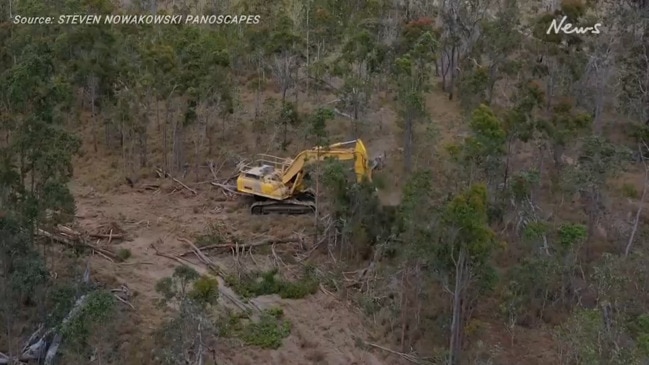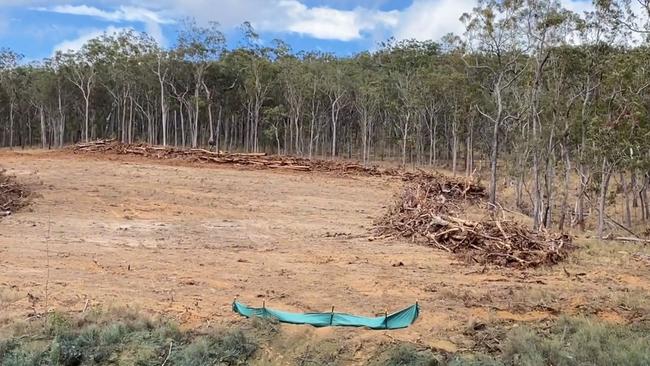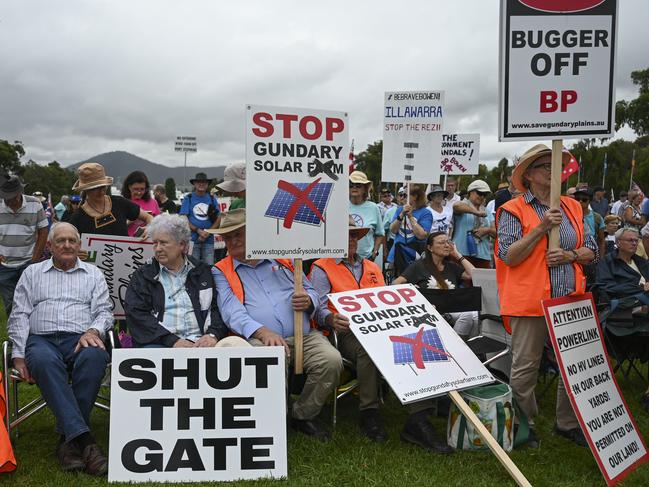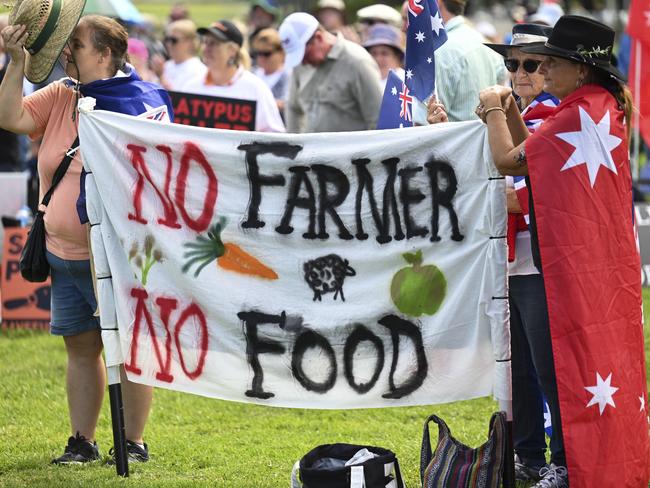Vikki Campion: Clearing for wind farms destroying valuable wilderness
The apparent reason for clearing this land — and destroying the habitat of the native quoll — was to power 12,000 homes by harnessing the wind. The reality is two months of not enough grunt to charge an iPhone, writes Vikki Campion.

Opinion
Don't miss out on the headlines from Opinion. Followed categories will be added to My News.
Your childhood playground is blown up. There are no tanks, or missiles. It was not a soldier who planted the dynamite exploding clouds of dirt and rock into the sky, but a foreign energy company that recently earned a spot on the list of highest-earning corporations that pay no tax in Australia.
When Steven Nowakowski first filmed this, the landscape photographer and cartographer thought the sacrifice — of the land he hiked, took his loved ones to, camped on and took vibrant photographs of native birds and animals, including the best population of northern quolls — would be worth it for one “clean and green” wind-energy plant.
It would, he was assured, power 70,000 homes.
Instead, North Queensland’s Mount Emerald had 63 days last year where it powered nothing at all.
For 107 days, it powered less than 10MW, less than 5 per cent of what developers said it would produce.
Far from the 70,000 homes it was supposed to power, over 2022 the median capacity was 18 per cent, meaning it struggled to power even the closest towns — my home patch of Atherton and nearby communities in Far North Queensland, with about 12,000 homes.
The last time Nowakowski marched the streets was for climate action. Now, he is fighting wind-industrialisation.

Many at the Rally Against Reckless Renewables at Parliament House on Tuesday admitted the last time they had been to the nation’s capital was to protest the Adani coal mine.
The truth of the alternative — hundreds of thousands of hectares of deep wilderness blasted for roads and turbines — wasn’t disclosed then.
On the lawns were Akubra-wearing farmers, long-haired surfers and tattooed fishermen fighting foreign industrialisation of where we grow food, swim, bushwalk, bird watch, surf, and fish.
Inside, in the airconditioned halls, suit and tie shills with “climate” somewhere on their business card sneered “cookers” and maybe genuinely believed destroying Australia’s biodiversity and prime agricultural land to erect 300m turbines anchored down in concrete swimming pool blocks would be a benefit to the globe’s temperature.
After being shocked at how “green” these power plants were, Nowakowski camped at Kaban, near Ravenshoe, and captured bulldozers and cranes ripping into the untouched forest.
At Lotus Creek, he photographed a koala with a joey on her back; the tree she’s eating from has green flagging tape around it. Next, it’s ripped from the ground and pushed off an escarpment. Her home is piled up in debris.
Nowakowski doesn’t know if he can ever go back.
You would have seen his work on calendars, diaries, and posters in wellness spas, depicting dreamy flowing creeks and rainforests, the kind of vistas burnt-out executives envision to meditate.

For my part, I’m both homesick and sickened at how destruction has befallen my childhood playground.
So far, Nowakowski has counted 5200 turbines in the pipeline just in Queensland, which requires 4620km of new haulage roads.
When he lays the maps of the projects over the world heritage rainforest, they are hard up against the border, hugging the transmission lines, with 14,100ha to be cleared.
So why do we need so many?
The apparent reason for destroying the habitat of the native quoll in North Queensland was to power almost every voter in the electorate of Kennedy — yet the reality is two months of not enough grunt to charge an iPhone.
For the three months before Mount Emerald was switched on in August 2018, the power bill of a household of two in Tolga was $5.64 a day. By August 2023, with Mount Emerald operating in full, that was $10.50. The company that runs it, Ratch, posted a $150m-plus profit internationally for the first half of 2023.

The wind required to turn a turbine is no gentle breeze. It needs to reach 5m/sec for power to be generated. Rather than using the reality of how much wind is on a ridge, companies get 30 years of weather data and convert it into the average output of a turbine. They do not include prolonged and deep wind droughts.
When renewables boosters say “the wind is always blowing somewhere”, that doesn’t mean it’s blowing meaningfully anywhere in Australia.
At first, only severe wind droughts will cause blackouts. The gap will widen as reliance on intermittent power sources increases, and we will be in the dark more frequently.
It’s not good enough for the Australian Energy Market Operator to boast about the average high when what matters are the low bits that see them drop regions off the grid in rolling blackouts.
Nowakowski has mapped 60,000ha of elevated North Queensland’s remnant forests for wind turbines in deep wilderness.
He points out we will need twice that to power a large electric vehicle fleet, 10,000 additional turbines at least to make hydrogen at scale, and millions of hectares more to make Australia a “green” exporter.
Around 1000 wind or solar power plants are in development across Australia, where proponents are guaranteed an income, not from the product of energy but from selling carbon offsets to polluters. It’s the wild west of wind rorts.
Nowakowski is bracing himself for a decision on the upper Burdekin wind farm, currently before the Albanese government, where Sharman’s rock wallaby; the red goshawk, the holy grail of raptors; and the best population of koalas will be slaughtered.
Not enough, though, for Climate Change Minister Chris Bowen to make it outside to the lawn on Tuesday — he made a different choice for those he wants to hear from. They are already in the halls of power, wearing parliamentary passes and being paid six figures.
It’s no coincidence that those who came by bus, from a 2000km radius — from the Barossa to the whale-watching coast to the tropical far north — in hats and sunscreen, taking time off work, were primarily restricted to the public areas of Parliament House, far from the blue carpet where the ministers reside.
They were outside, where the government wants them to remain.
Got a news tip? Email weekendtele@news.com.au





